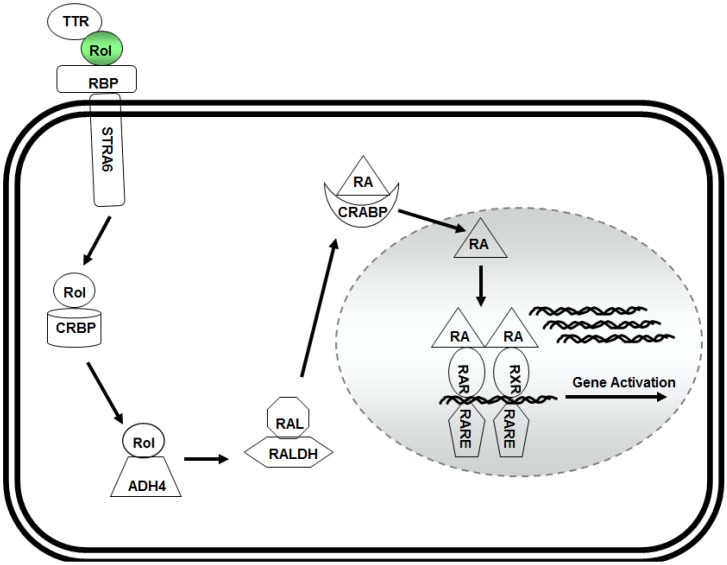Figure 1.
Model for retinol metabolism in a target cell: vitamin A/retinol (Rol) binds with the transthyretin (TTR) and retinol binding protein (RBP) to form a ternary complex that binds to STRA6 receptor on the surface of the target cell. Inside the cytoplasm, retinol binds to cellular retinol binding protein (CRBP) and is oxidized to retinaldehyde (RAL) by alcohol dehydrogenase (ADH4). RAL is then converted into retinoic acid (RA) by retinaldehyde dehydrogenases (RALDH). Retinoic acid isthen transported into the nucleus by binding to the cellular retinoic acid binding receptor (CRABP) where it forms a complex with RAR and RXR receptors that binds with retinoic acid response elements (RARE) in the promoter region of responsive genes to activate their expression.

